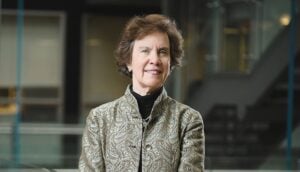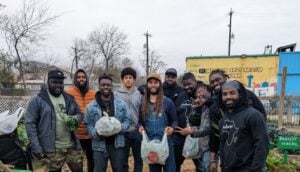In 2014, the UN Climate Summit, the first ever U.S.-Africa Summit, dwindling natural resources, gaps between the rich and poor has propelled awareness of advancing solutions for our complex challenges.
To be sure, the influence of climate change is fueling global economic volatility, posing threats to natural resources and wildlife habitats. What is certain is that progress must be made to ensure a healthy planet for our future generations.
A recap of the top realities we face includes:
- Harsh climate: This burden cost $2.1 billion between 2000-2013 due to weather-related disasters.
- Destruction of forests: Half of the earth’s forest cover is gone with only 40 billion hectares remaining today. Every year, an average of 13 million hectares of forest disappear, often with devastating impacts on communities and indigenous peoples. The conversion of forests for the production of commodities such as soy, palm oil, beef and paper accounts for roughly half of global deforestation.
- Threatened wildlife species: The London Zoological Society has reported that world wildlife populations have been cut in half from 1970 to 2010:
- In the 1970s, Africa was home to more than 1.3 million elephants. Today, as few as 419,000 may remain and 35,000 elephants are killed by poachers each year to feed the ivory black market.
- The South African government recently reported a record 1,020 rhinos have been poached in the country since the beginning of 2014, surpassing the 1,004 rhinos killed in all of 2013.
- Chronic diseases: Deaths from chronic diseases, such as cancer and heart disease, have risen by more than 50 percent according to the Council on Foreign Relations and are rising fast in low and middle-income countries, striking far younger populations than in rich countries.
- Lack of education in Africa: Today, there are 30 million children who are not receiving education and according to the 2014 Education for All Global Monitoring Report, the shortage of quality teachers is the key problem. Children are not receiving quality education and skills training for potential jobs.
Major initiatives in 2014:
First Ever U.S.-Africa Leaders Summit in D.C: The White House convened African heads of state and government, U.S./African corporations, civil society to strengthen alignment between the United States and opportunities for trade and economic investment in the continent. Africa is finally being recognized as the next major emerging market, access to new consumers and resources with a combined GDP upwards of $2 trillion.
UN Climate Summit: President Obama unveiled a series of actions to urge the international community to cut emissions and help developing countries better prepare for climate change. While the EPA proposed a new plan designed to cut carbon emissions by 30% by the year 2030:
- New York Declaration on Forests: More than 150 governments, companies and NGO world leaders endorsed a global timeline to cut natural forest loss in half by 2020, and strive to end it by 2030.
- U.S. and China signed the first major deal on climate change to cut emissions.
Predictions for 2015: Value of nature:
While nature is deemed priceless, various studies have tried to estimate the value of ecosystem services (provision of timber, minerals, food and medicines) in financial terms. The total value of ‘nature’ is estimated to be about $33 trillion per year of which the global economy is consuming about $7 trillion dollars annually.
This is raising the bar on developing more inclusive partnerships between the public and private sectors to ensure the provision of basic needs (such as food and water) and solutions to ensure more resilient economies.
Environmental awareness and education: With consumers and millennials more informed about the increasing role of crowd funding, digital and mobile network applications, for and nonprofit companies must improve how they share, advocate and demonstrate their commitments. Also, enlist participation from the public at large with authenticity and transparency.
Forest and wildlife protection: Continued action to conserve, sustainably manage and restore forests can contribute to economic growth, alleviate poverty, creating food security, protecting wildlife species and habitats.
Investment in Africa: Africa’s economic growth and prosperity will be driven by primarily investing in youth education and creating jobs.
Market access: More correlation and alignment between trade, new and existing markets is the focus of economic growth. The co-creation of programs at the community-level with businesses, government and nonprofits is essential for long term sustainability, protection of resources and livelihoods.
Conclusions:
In a disruptive global economy, companies and individuals have significant opportunities to promote economic growth, develop new products and access new customers, while saving trees and protecting wildlife species. However, what is fundamental to this success is to convene more alliances, break down silos, enforce greater knowledge exchange and a more united front to address the complex challenges associated with climate change.











One Response
Please enjoy my latest blog post and perspectives about addressing the complex challenges associated with climate change and value of nature.